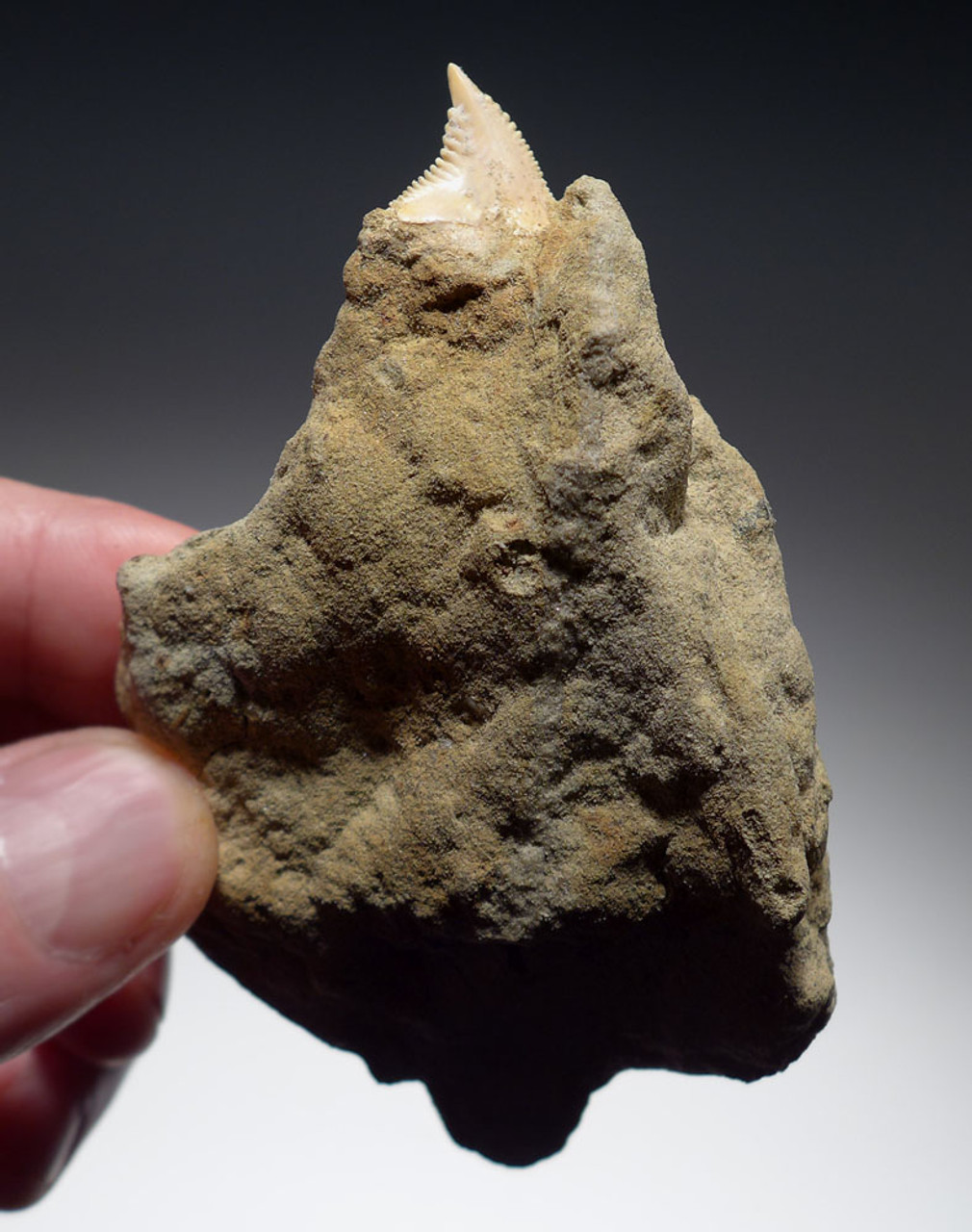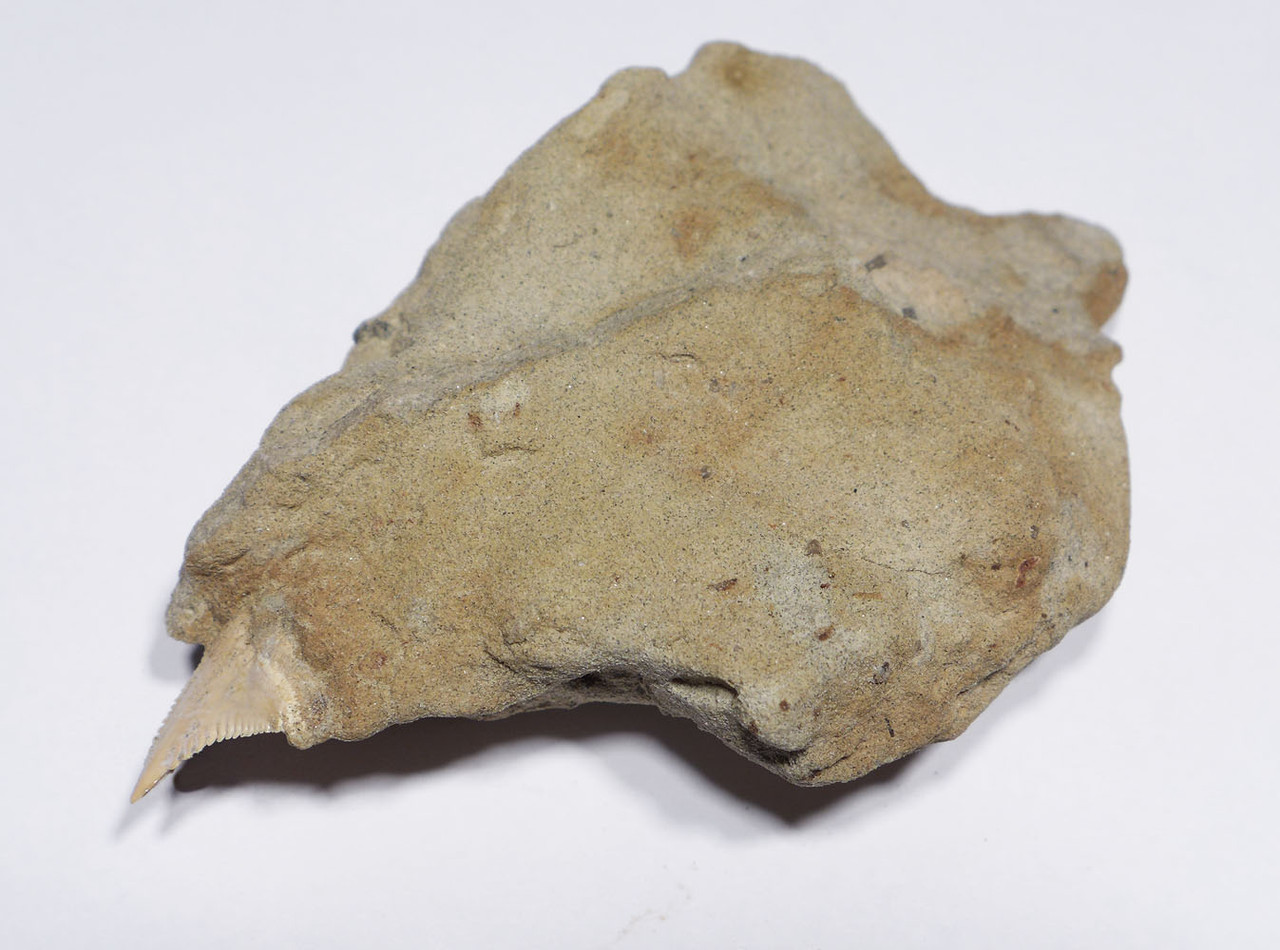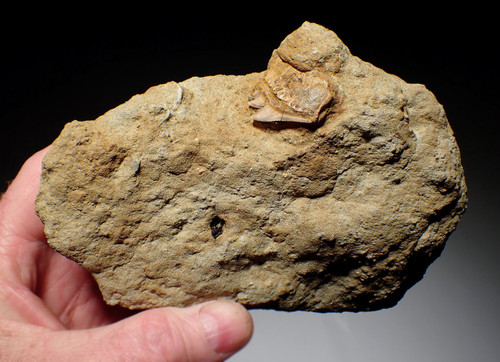Product Description
SEE MORE MISCELLANEOUS SHARK FOSSILS
The predominant fossil shark teeth found at the famous Sharktooth Hill deposits in central California are two types of extinct Mako shark believed to be the ancestor to the present day Great White shark. They are Isurus hastalis, the extinct Giant Mako, and Isurus planus, the Hooked-tooth Mako. A much more rare type of shark fossil found there are remains of the extinct Tiger shark, Galeocerdo aduncus. These teeth average about .5", reaching a maximum size of about 3/4" in diagonal length. This portion of original fossil-bearing Sharktooth Hill sandstone matrix contains a complete collector-quality tooth of this rare shark. The unique crown protrudes off the edge of the matrix, still embedded exactly as it was found.
A great display and educational shark fossil to show what the surrounding soil is like in which these famous fossil shark teeth are found in. The matrix also often includes other fossil bones and teeth of fish, sea lion, whales and dolphins of various species.
HISTORY
The rich Miocene fossil deposit known as "Sharktooth Hill" located in Bakersfield (Kern County), California has a reputation as the finest and most diverse fossil deposit of Miocene sharks, rays, bony fishes, turtles, birds and mammals (both marine and terrestrial) of the entire Pacific realm of North America. The formation is a result of silt spilling out of a prehistoric river delta into a Middle Miocene sea that once covered central California over 12 million years ago. This river originated in the nearby mountains east of Bakersfield. The fossil-bearing layer is thin ranging an average of only 6" - 18" thick but it spans approximately 100 square miles!
 US DOLLAR
US DOLLAR
 EURO
EURO
 AUSTRALIAN DOLLAR
AUSTRALIAN DOLLAR
 CANADIAN DOLLAR
CANADIAN DOLLAR
 POUND STERLING
POUND STERLING




















